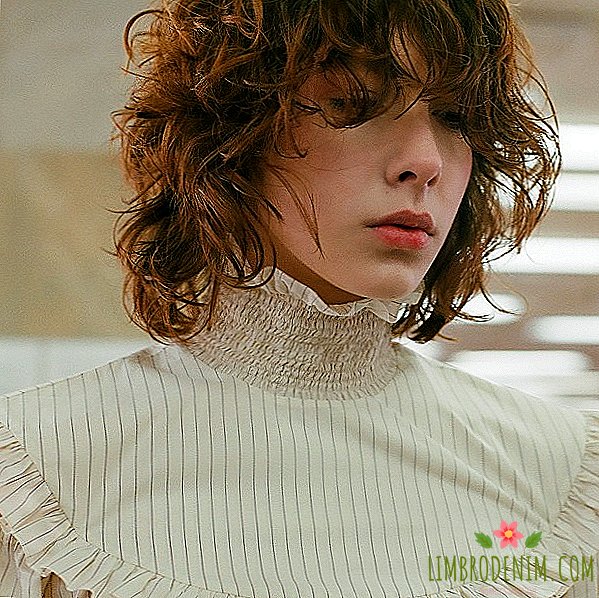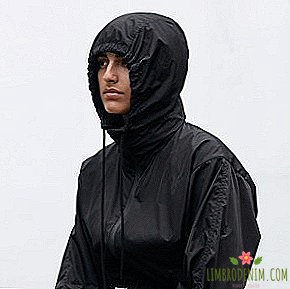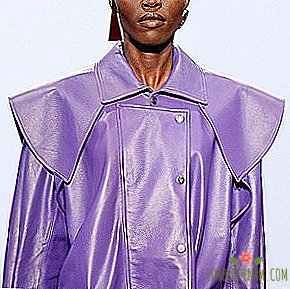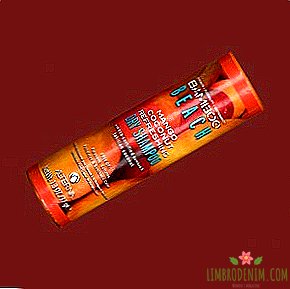Freedom, equality, fraternity: What you need to know about Ukrainian fashion
IN THE FASHION WORLD OF UKRAINE SOME SOMETHING IS DEFINED. There have been a lot of foreign publications devoted to Ukrainian designers in the last couple of years - and it doesn’t matter whether they went out in daring Dazed and Vice or reserved by the Financial Times and the New York Times. The headings were the most diverse - to become a reason.
A team of Ukrainian designers went to Florence to represent their country at the Pitti Uomo event - Pitti Guest Nation. Anton Belinsky first won the Mercedes-Benz Fashion Prize, and then got to the final, perhaps the most famous competition in the world dedicated to young designers, LVMH. Ksenia Schneider has come up with jeans that have become cult for the year - as a result, they hit every second review of the world street style. On the practical side, too, everything is in order - Ukrainian brands can be found in stores around the world: in Italian la Rinascente (WeAnnaBe), in Nigerian Alana (Flow the Label), and in Korean 10 Corso Como Seoul (Ksenia Schnaider). We understand how one person gave a start to all this and why politics has nothing to do with it.

From 1 to 5 February, the Mercedes-Benz Kiev Fashion Days took place in Kiev - a local fashion week, starting on the eve of the main weeks of the four world capitals. She is six years old this year. During this time, much has changed, and most importantly - the political and economic situation in the country where it passes. It is amazing not even that the event continues to exist, but how strongly it promoted Ukrainian fashion, becoming one of the main local events in the world. It can only be compared with the Stockholm week of seven years ago. Only if the latter became popular in the wake of interest in Scandinavian design and rose due to state support, the excitement around Mercedes-Benz Kiev Fashion Days was born from the ambitions and irrepressible energy of one person - journalist and TV presenter Darya Shapovalova.
Appearing in 2011, Mercedes-Benz Kiev Fashion Days was the beginning of a new history of Ukrainian fashion. By that time, the Ukrainian Fashion Week existed in the country for fifteen years, which, by the way, still exists. It began, however, after the remaining weeks, when the buyers had already formed their order. Mercedes-Benz Kiev Fashion Days has changed the situation dramatically - after it, interest in local design was revived. “When I came to the first Kiev Fashion Days and saw the scale, I realized that I wanted to establish my own brand,” says designer Anna K. Now a 21-year-old girl takes a place on the Forbes under 30 list and connects her breakthrough with the event, giving hope to young authors. Special conditions have been created for the latter: a partnership project with the British Fashion Scout was launched four years ago as part of the Fashion Week. They make group shows of very young designers who are not ready for full-fledged collections; Platform founder Martin Robertson, along with the team, personally selects the participants. Already after two or three seasons at Fashion Scout, designers start making shows on their own.
The scale of the event is also a merit of Shapovalova, who before the launch had extensive connections in the fashion world: among other things, she and her team did interviews and broadcasts during World Fashion Week. So, from the very beginning, special attention was paid to the foreign press, buyers, teachers of fashion schools, who later became the constant Mercedes-Benz Kiev Fashion Days. For several seasons in a row, Liana Satenshtein, a journalist and regular author of the digital version of American Vogue, has been coming. Due to this, the site regularly contains materials about Ukrainian culture. Texts about local models, the singer Luna, the influence of national costume on world fashion - her handiwork.



Young designers admit that they are tired of the fact that in some foreign media their generation is called "Post-Maidan Designers", because they believe that their brands and the industry itself began to take shape a few years earlier. “We do not associate interest in the Ukrainian fashion from the Western press with the conflict. In our brand, it’s not at all customary to talk about politics,” says designer Dima Chayun of the promising Chakshyn brand. The designer Anna K agrees with him: “When it all started, it seemed to me that we were partially supported because of the political situation. But now it is not felt at all - everyone is looking at the result, because the most important thing in the industry is you are creating a product. And politics goes to the background. "
Although foreigners do not deny that Ukraine is now in the center of political attention, they are ready to look beyond the attractive infopowder. This time the event was first visited by Alexey Timbul, a lecturer at the faculty of fashion journalism at the Academy of Art University in San Francisco and a freelance writer of Forbes USA: "In our era, it is impossible to separate geopolitics and pop culture. Kiev appeared on our radar, but it’s not so much to understand the causal relationships, how much to pay attention to the quality, potential and innovation that Kiev shows the world. " Aleksey admits that the program of the week was uneven, but it does not blame the MBKFD platform - it is inevitable in such a young industry where many designers would have to do more work before branding: “To overcome the hegemony of р ruches’, you must sincerely believe in fashion as something more. The merit of Dashi and her team is that they care for and nurture this energy-intensive and long-term project day after day. "

The project, meanwhile, has already paid off. The main merit of the week is the opportunity to start, the success of which depends only on the designers themselves. But there are still many factors due to which Ukrainian fashion is still widely known. For example, streamlined production. Having filled the bumps, many designers realized how important it is to comply with seasonality. Almost everyone sews things back home - it is cheaper and more convenient to control. Many have their own ateliers, which are located in the same place as the showroom, such as, for example, Lily Litkovskaya of the Litkovskaya brand of the same name, whose work can be called a craft: all embroideries on things from the latest collection were made by hand.
Own space makes it possible not only to monitor each stitch, but also to work personally with clients. There are also separate small factories that partially collect collections of Ukrainian designers: for example, the main ones are working on Anna October, Anna K., Vozianov and Shushan things. Total involved about a hundred people. Formed a separate business, a solid part of the industry. Most designers, like Flow the Label, work primarily with foreign fabrics and often go to the main world exhibition of materials Première Vision. Many brands exhibiting there now also have a representative office in Ukraine - for example, the services of the guys from Chakshyn use their services.



At the same time, Ukrainian designers refuse to speculate on the historical heritage - although it would seem that on the wave of interest in the post-Soviet space, foreigners are just waiting for this. The exception is the incredibly popular brand Vita Kin, which made a single product in the form of embroidered shirts; however, it does not appear in fashion weeks and develops in a special way. On Mercedes-Benz Kiev Fashion Days you will not see Ukrainian folk costumes, sweatshirts with the president or slogans.
If designers turn to the past, it is in a completely different way. Upsykling, things from recycled materials, ethical production - what is now most discussed in the world fashion industry. And this is something that Ukrainians can show the world thanks to the gigantic collapse of Lesnoy and the huge amount of second-hand clothes that fashionable young people wear in the city. It is the old clothes that become the source of inspiration here. For example, for Yasi Khomenko, who creates new things from old ones: clothes, furniture upholstery, and even curtains are used. Many things Yasi, for obvious reasons, exist in a single copy. Anton and Ksenia Schneider of the Ksenia Schnaider brand continue to develop the theme of upside-down. For a fresh collection, they used old denim and reworked their sport uniforms from the 80s, making workout pants and sweatshirts. The search for suitable things in second-hand special was made by the person from the brand team.

In addition, none of the designers pretend that their things exist in a vacuum. If we even talk about the democratization of fashion, then in Kiev it is especially obvious. Absolutely everyone could come to the shows of Anna K., Сhakshyn and Ksenia Schnaider. Designer Dima Chayun explains that they are letting all brand fans on the show, because they represent a new generation: "In five years they can become journalists or our clients." For comparison, in order to get to Moscow weeks, you need to go through all the circles of hell in the form of several cordons of protection. While the new collection of Anna K. was generally shown at TsUM in the middle of the food court, so passers-by saw it without knowing it. After the Anna October show, the models stood in a row by the window and froze for ten minutes so that everyone could take a picture with them. The Ksenia Schnaider show was similarly arranged: at the end of the model they stood in a circle, and the audience could sit on a chair to take a collective selfie.
Finally, local designers have established work with buyers. Natalya Modenova, co-founder of the More Dash showroom and Mercedes-Benz Fashion Week Kiev, notes that the problems that young authors encounter when meeting with potential buyers are more or less the same: they experience, cannot clearly tell about themselves, do not know what you need to prepare prices in advance. That is why she, together with Daria, decided to take the risk: in the midst of the revolution, they founded the More Dash agency, which sells abroad, including Ukrainian designers. Since the second season, a pool of brands has been formed: now it includes Flow the Label, Anna October, Marianna Senchina, and from the new season also Chakshyn.

This time the Litkovskaya collection was shown in the basketball hall of the Institute of Physical Education. Sport and religion are two starting points of the show itself. As one of the sources of inspiration, the designer calls the series "Young Dad"

Natalia says that there is no direct connection between the Mercedes-Benz Kiev Fashion Days and the More Dash showroom: "If a brand can competently build its work and PR without having to conduct a separate show, then we are ready to cooperate." The agency itself looks closely at potential clients, and also considers applications: “We are looking at the brand strategy, how work is already organized inside, and, of course, the collection itself.” This is a business project: if a brand’s sales grow, so does the commission. Some brands like Ksenia Schnaider or Jealousy themselves arrange showrooms abroad during fashion weeks - in this case, the whole organization falls on the shoulders of the brand's team.
Interest in Ukrainian designers is noticeable in the city: in cafes and shops you can meet people in recognizable things. At the end of 2016, the Central Department Store opened in Kiev, providing platforms for various retailers. Now there you can find corners, in which there are Anna K., and Vita Kin, and LAKE, and Litkovskaya, and many others. The Corner Concept Store is also excellent, where you can find only Ukrainian designers things. Ukrainians are also represented in the main expensive multi-brands of the city like Atelier 1 or Helen Marlen.

Ksenia Schnaider is a brand that is followed not only by those who are interested in Ukrainian fashion, but also by designers of the mass market. Not so long ago, Mango released a jeans model exactly like Demi-Denims.
However, the success stories of sales are all very different. Noteworthy in this regard is the Ksenia Schnaider brand, the sharp rise of which began after the 2016 fall-winter collection, in which the jeans of Demi-Denims, which became a hit, were first introduced. According to the designer, the photos from that presentation were published on Vogue Runway, and then appeared in instagram about the С_L_O fashion. A few weeks later, the bloggers Eleonora Karizi and Anastasia Masyutkina put them on during Milan Fashion Week and got into all sorts of street-style reports. "Then we went to Paris, where Capsule received its first orders from Japan and Korea on the trade show," says Schneider, "Already in October, ten times more buyers came to us, most of whom were from Asia."
This is a good example of how the industry, which more than ever needs fresh blood, works. “Now, young designers have a very favorable time - everyone wants something new. People want to wear not only what everyone sees and knows,” says Natalia Modenova, executive director of Mercedes-Benz Kiev Fashion Days at the end of Fashion Week. And above all, this applies to foreign buyers, fed up with things that they saw on the podium six months ago. It is thanks to the creation of something fundamentally new, catching the eye, and the development of the industry of the whole country. And the potential here - to the envy of others.
Photo: Andrey Noskov





